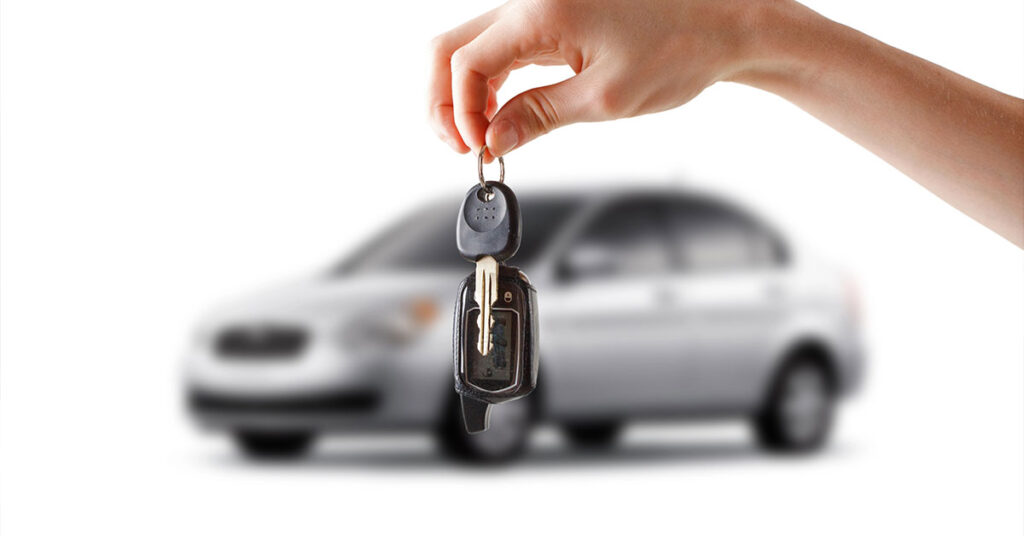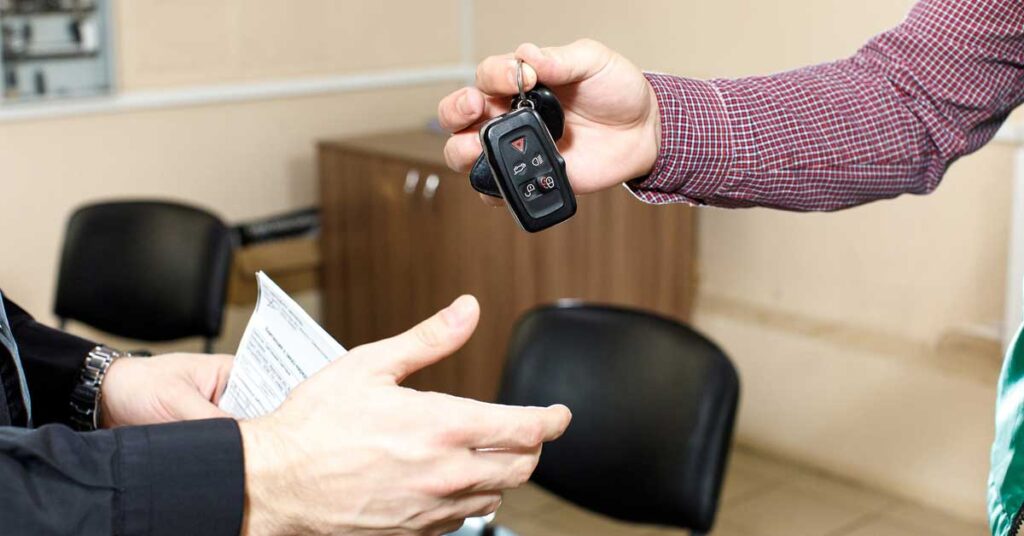Discover your car’s true value with our expert guide. Learn what affects price & get accurate estimates with easy tools. Fast, simple & Aussie-focused advice.
Transferring car ownership in New South Wales isn’t exactly rocket science - but if you’ve never done it before, it might feel that way.
Whether you’re buying, selling, or handing your vehicle over to a family member, the steps are pretty straightforward once you know what you’re doing.
This guide breaks it all down in plain English - no jargon, no confusion, just practical info to help you get it done right and on time.
Handing over a vehicle without changing the official records is a recipe for trouble. Until the ownership is transferred, the old owner is still legally tied to the car.
That means if the new driver racks up fines or skips rego payments, guess who’s getting the letters? Yep - you. Transferring ownership protects both parties and keeps everything above board with Transport for NSW.


Both buyer and seller play a role in the transfer process. It’s not just a handshake and a wave goodbye.
Buyers are in charge of lodging the transfer with Service NSW. This must happen within 14 days of the purchase date to avoid late fees.
The buyer also has to pay the stamp duty and any applicable registration transfer fees. Keeping copies of the transaction record is smart, just in case something goes sideways.
Sellers need to submit a Notice of Disposal either online or in person. This step formally says, “I no longer own this car.” Without it, the seller could still be liable for any road-related mishaps or penalties linked to the vehicle.
Here’s how to go from keys-in-hand to legal new owner. Follow these steps, and you’ll be in the clear.
Gather up your ID, proof of purchase (like a receipt or sale contract), and the vehicle's registration papers. If you're handling it online, have your MyServiceNSW login ready too.
The seller logs in to their Service NSW account or visits a centre to declare the sale. It asks for basic info: buyer’s details, sale price, and date of sale.
The buyer goes to Service NSW - either online or at a branch - and follows the prompts to transfer the rego. You’ll need the vehicle’s plate number, VIN or chassis number, and the seller’s Notice of Disposal reference if available.


Here’s where the wallet comes out. Buyers pay stamp duty (calculated based on sale price or market value) plus a transfer fee. Credit cards, BPAY, and in-person payments are accepted.
Once everything’s lodged and paid, both parties should get confirmation. The new registration details will be mailed to the new owner. If not, call Service NSW - don’t wait weeks assuming it’s done.
Online transfers are fast, convenient, and ideal for standard private sales. You’ll need both parties’ IDs, the car’s registration details, and access to a MyServiceNSW account.
You can use the online option if the vehicle is registered in NSW, both parties have NSW addresses, and there are no restrictions on the registration. Commercial or company vehicles might need a bit more red tape.
Sign into your MyServiceNSW account. If you don’t have one, you can set it up in under five minutes. Then enter the vehicle details and complete the required fields. Easy as.
Double-check the info before submitting. Typos in VINS or addresses can cause headaches. Also, make sure the internet connection is stable - losing your data halfway through is nobody’s idea of a good time.


If you prefer the old-school route or don’t meet the online requirements, you can still do it at a Service NSW branch.
If the car has overdue fines, unpaid rego, or special conditions (like being a written-off vehicle), you’ll need to go in. The same goes if you’re transferring from another state or country.
Take your proof of identity, completed Notice of Disposal, proof of purchase, and the registration papers. Originals - not photocopies - are usually required.
You’ll queue up, submit your documents, pay the required fees, and walk out with peace of mind. If anything’s missing, you’ll be told what to bring back. So it pays to be prepared the first time.
Get your paperwork straight, and you’ll be done in half the time. Here’s what both parties should have ready.
A driver licence or another government-issued ID that includes your address and photo. If you’re not an Aussie citizen, additional documentation might be requested.
This includes the Certificate of Registration and any past inspection reports if relevant. While optional, it helps to verify details.
Completed by the seller. Can be done online or using a paper form picked up from Service NSW.
A signed receipt showing date of sale, vehicle details, names of both parties, and sale price. A quick note scribbled on paper can suffice, but clearer is better.


This part might not be fun, but it’s necessary. Let’s break down the dollars.
As of 2024, the transfer fee is $36. You pay it when lodging the transfer. It’s a flat fee, so no guesswork is involved.
Stamp duty in NSW is calculated at $3 per $100 of the car’s market value or sale price - whichever is higher. So, for a $10,000 car, you’re looking at $300. Some exemptions apply for family transfers.
Buyers must lodge and pay within 14 days of purchase. Miss that, and you’ll cop a late fee of around $160. Don’t let it drag - mark the date and get it done.
Not every car sale is a straight swap of keys and cash. Here are some oddballs and how to handle them.


If the vehicle’s owner has passed away, their executor must provide proof of death and legal authority to transfer the vehicle. This usually means a will or probate document.
Even if money didn’t change hands, the transfer still needs to happen. Write “gift” or “$0” on the sale receipt. Stamp duty still applies unless you qualify for an exemption (like between spouses).
If the vehicle’s coming from another state, it needs to be registered in NSW first. This may involve a safety inspection, weighing, and providing proof of previous registration.
Then you can transfer ownership under NSW rules.
Mistakes in paperwork or timing can cost you big time. Here’s what trips people up.
People often forget to act within the 14-day window. That delay can lead to fines, plus you might end up liable for something that wasn’t your doing.
A wrong VIN number or a missing ID can halt the process. Double-check everything - this isn’t the time for guesswork.


Some think they can submit now and pay later. Nope. Payment is part of the process. No cash? No completed transfer.
It’s not just paperwork - it’s protection. Failing to transfer can create a mess for both parties.
Unpaid tolls, fines, and even crimes committed using the vehicle could be pinned on the listed owner. That’s a legal headache no one wants.
The wrong person gets the fine notice. Disputing it takes time and proof. Far easier to avoid the problem altogether by lodging the transfer.
Need a hand? These resources can guide you through the process without stress.
Call 13 77 88, visit a Service NSW branch, or hop onto their website for answers. Staff are generally helpful, and the FAQS cover most common issues.


The Service NSW transfer page is your best friend here. It has calculators, checklists, and step-by-step instructions.
Changing ownership of a car in NSW is no mystery - just a process. Know the steps, act quickly, and you’ll be sorted in no time.
Whether you’re parting ways with your old wheels or buying your next ride, getting the paperwork right saves time, money, and stress.
Gather documents, submit the Notice of Disposal, lodge the transfer, pay the fees, and confirm it’s all done. Each step matters, and skipping one can come back to bite you.
Act within 14 days, triple-check your info, and keep copies of everything. And if you ever feel stuck, Service NSW is just a phone call away. Happy motoring!
Discover your car’s true value with our expert guide. Learn what affects price & get accurate estimates with easy tools. Fast, simple & Aussie-focused advice.
Learn how to sell your car quickly & get a fair price with expert tips on pricing, prep, listings & removal services. Fast, easy & reliable advice inside.
Thinking about trading in your car? Whether you’re upgrading or just curious about how much your current ride is worth, understanding trade-in value is essential. Dealers use a mix of factors and formulas to decide what they’ll offer you, and those numbers can vary widely. In this guide, we’ll break it all down, no guesswork […]
Learn how car valuation works in NSW. Get expert tips on age, mileage, market trends & tools for pricing your car competitively whether selling or buying.